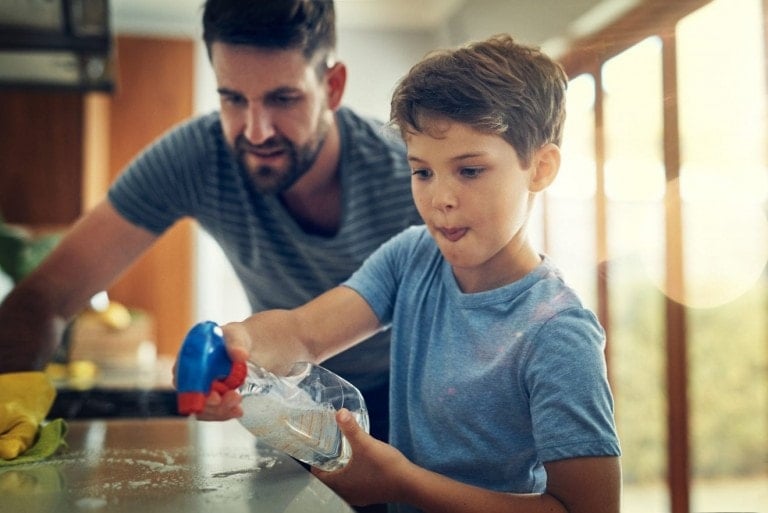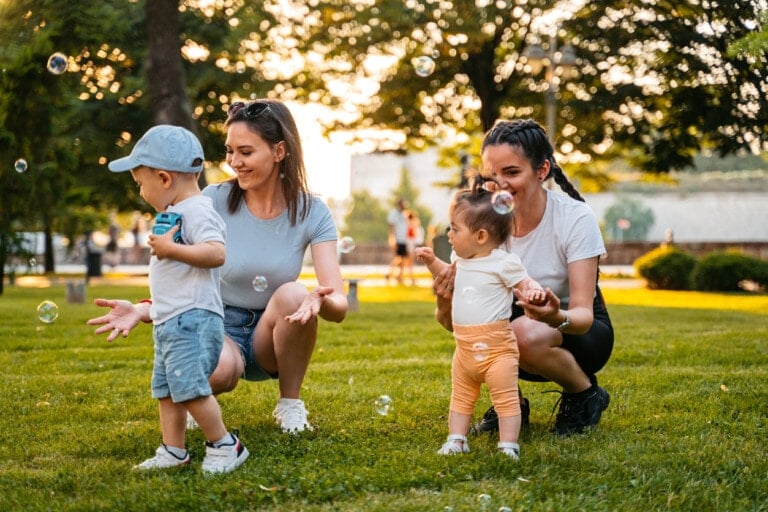I heard and read lots of discussions about consent before my babies were born. There are lots of creative ways to frame conversations with kids. Lots of child-friendly words to help them understand. All of which I was (and still am) committed to implementing as they got older and could understand those things. But, as my kids became toddlers and started to talk and find their voices, I quickly realized that there are TONS of easy opportunities to teach them the value of consent from an early age. I will share four ways to weave those conversations into your daily interactions. And how you can teach your preschooler about consent:
1. Stop When Your Child Says “No.”
It is so easy to ignore a child’s voice when playing a game with them that we think they should love – pretending we’re monsters, chasing them around the house, tickling them, and throwing them up in the air. Sometimes, I catch myself continuing to tickle my kiddos or rough-house with them after they’ve said “no” amid their giggles. But, we try our hardest to listen well for “no” and stop immediately when we hear it. Yes, sometimes they may say no but still want to play, and that’s okay. I stop first in response to their no. If they look at me expectantly, ready to keep playing, I ask, “Do you want me to tickle you again?” I then respond accordingly after they’ve voiced what they want. It is so important for them to learn that they have a voice. And to grow to expect that their voice will be listened to.
2. The “Please Stop” Rule
I grew up thinking “please stop” were the magic words. I was the older sister by two years, so naturally, I liked to push my sister’s buttons. Many times, though, amid my bothering, she would say, “Please stop.” I knew there would be significant consequences if I dared continue pushing after hearing those words. Those simple words greatly affected my understanding of consent as an adult. I learned as a child that someone’s words concerning their body matter immensely. I also learned that my words, about my body, matter just as much. Fast forward to my parenting; my middle child is currently three and has an unbelievable ability to push his sisters’ buttons. Needless to say, we get lots of practice on this one.
3. Tell Them Why It Matters
In addition to consequences, when my kids don’t stop when they hear “please stop,” we use it as an opportunity to talk with them about why we expect them to stop. They’re 5 and 3, so we keep it short and sweet. Usually, we say something like, “That is your sister’s body, so only she gets to decide what happens to it, not you.” We also tell them that the same applies to their body, “It is the same for you. Your body belongs to you, and only YOU get to decide what happens to it.” Of course, as they get older, we can have more detailed conversations. However, at this age, the basics of consent still fit quite easily into everyday conversations.
4. Teach Them to Ask Before Touching Other People
My daughter has been a snuggle bug since the day she was born. Putting her down anywhere that was not on top of another person was a sure way to get her to start screaming. To this day, she still loves snuggles and hugs from mom, dad, and friends. But of course, not all of her friends love hugs quite as much as she does. So, we’ve had lots of great opportunities to teach her how to ask first before touching. I’ve found, especially snuggly little ones like her, that having this conversation before a playdate can be helpful rather than right in the moment. With my daughter, I try to remember to talk with her on the way to our visits with friends to remind her that if she’d like to hug someone, please ask them permission first.
Preschoolers are smart. They can have a great understanding of their bodies and respect other people’s space at an early age. We don’t need to wait until they get older to explain it to them. We also don’t need a long, drawn-out conversation with them at this age. Simple reminders and boundaries woven throughout their everyday experiences can make a difference in how they understand consent. And I find the more you can incorporate it naturally in the early years; the easier it is to understand in their older years.































